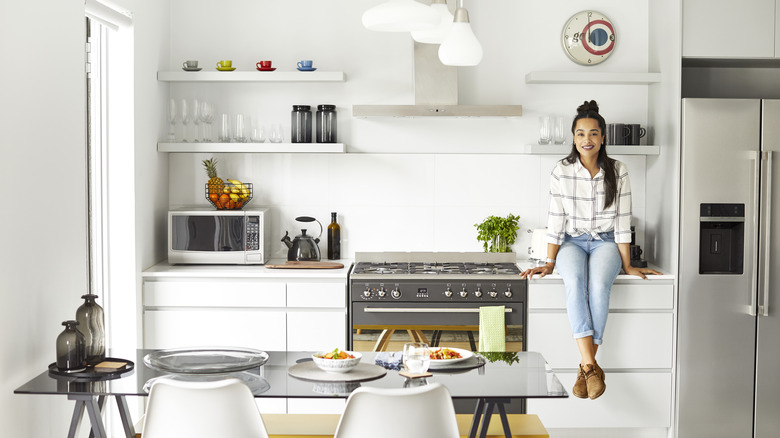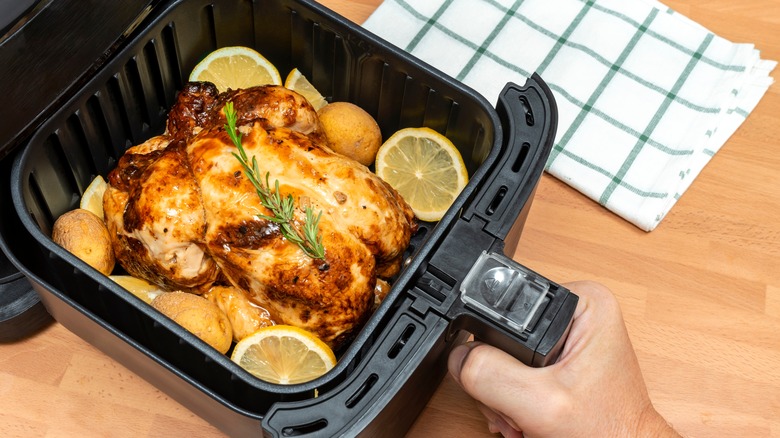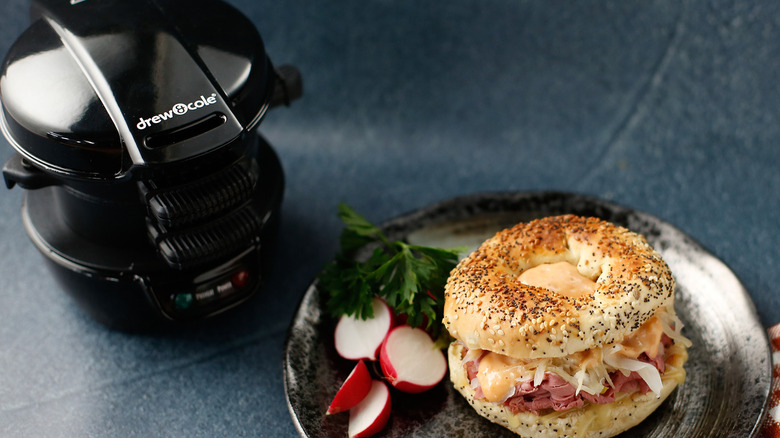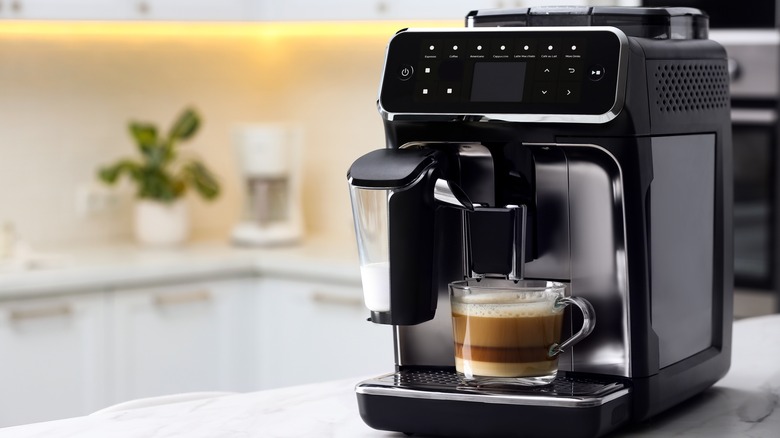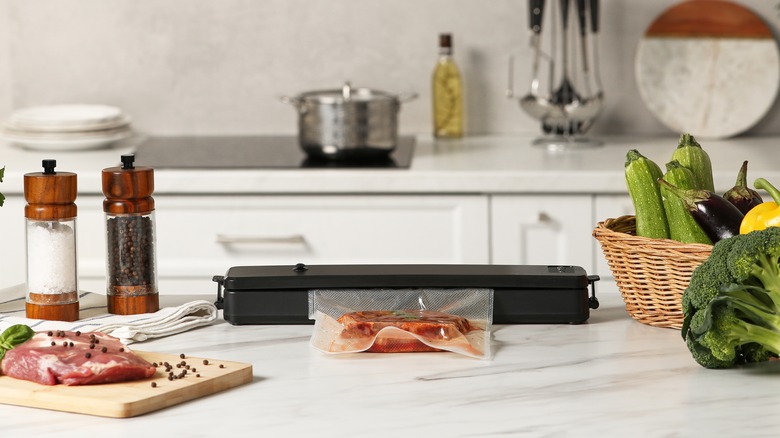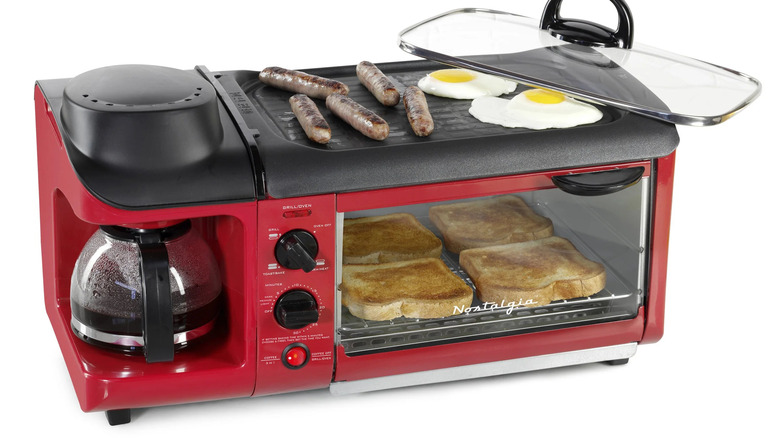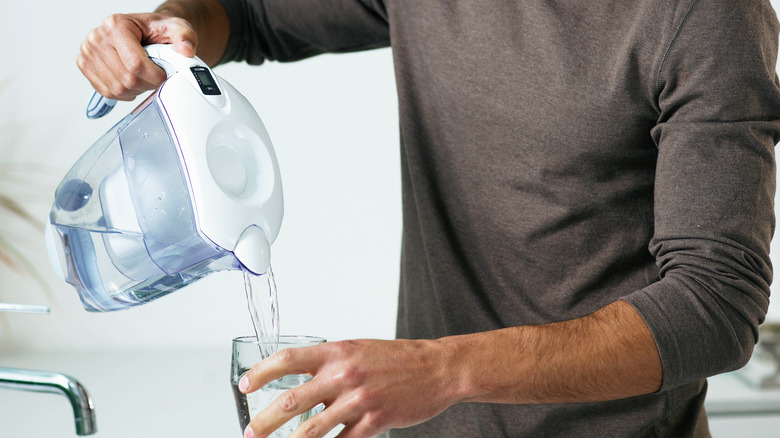6 Unconventional Kitchen Appliances That You'll Use More Than You Think
We may receive a commission on purchases made from links.
Yes, the stovetop, oven, and microwave are indeed the core of most kitchens, and for a good reason. Every time you open a recipe book, they're typically the appliances you'll need to whip up a dish, whether that's a simple spaghetti or a fantastic Thanksgiving turkey.
However, these kitchen classics that everyone and their mother is familiar with don't have to be the be-all and end-all of your culinary experience. There's actually a world of unconventional appliances out there, ones that you may not often see in households but are as handy as they are functional. These not-so-typical appliances can improve your kitchen in a lot of ways as they make a wide range of tasks easier, from simplifying your morning routine to transforming your grocery storage. If you're considering a kitchen upgrade and want more convenience in your cooking space, then these are six kitchen appliances to check out.
Air fryer
If you're trying to cut down on frying but are tired of the same old baking or roasting routine, buying an air fryer is a good move. This appliance works almost like a convection oven, which cooks food with a heating element and a fan. However, the key difference lies in the results: air fryers deliver a crunchier and crispier texture, resembling traditional deep-fried dishes but using less oil. In fact, a teaspoon of oil is all it takes to cook certain air-frying recipes.
Compared to ovens, cooking with an air fryer is typically quicker. They preheat faster, slashing cooking times by about 20%. This means your meals can be ready in roughly 20 minutes instead of 30, perfect for those mornings when you're in a hurry or those dinners when you don't have much time to prepare. Size-wise, air fryers are more compact, so it's the better option if you're in a small kitchen or want to save space. The downside, however, is that it's a hassle to cook large meals in an air fryer due to its smaller capacity. You'd have to make multiple batches to whip up a feast. But if you just typically cook for yourself or a roommate or two, then this is something you'd definitely use on the daily.
Sandwich maker
Sandwiches are the go-to food when you're in a hurry to get out of the door in the morning but don't want to skip the most important meal of the day. But unless you're a fan of cold sandwiches, putting together this breakfast meal isn't always as quick and easy as you'd like. A nice and toasty sandwich normally requires you to do a couple of things: fry your egg in one pan, fry your sausage, ham, or what have you in another pan, put your bread in the toaster, place your bread on a plate, and finally assemble the sandwich (there's also an additional step of microwaving your assembled sandwich if you want melted cheese).
To simplify and speed up your breakfast routine, use a sandwich maker instead. With this small but mighty machine, you can skip most of those steps and have your sandwich ready in as fast as five minutes. The sandwich maker works in four simple steps. First, add your bread (an English muffin, bagel, or frozen pancake) in the bottom ring with your choice of pre-cooked meat, cheese, or veggies. Then, slide it into the middle cooking plate and crack your egg on it (you can scramble it if you like). Next, place the top half of the bread on the egg before closing the sandwich maker. Finally, after five minutes or so, slide out the cooking plate, and voila — your sandwich is already assembled and ready to be enjoyed.
Espresso machine
Sure, a regular coffee maker does a decent job of providing you with that essential morning caffeine kick. But if you're a coffee enthusiast looking for a more sophisticated coffee experience, an espresso machine is worth adding to your kitchen. Unlike coffee makers that brew only a single flavor profile, the best espresso machines can make barista-quality coffees that are richer, creamier, and stronger. Plus, you can choose from various coffee types, from a cappuccino to a latte to flat white. If you're worried about the quantity, some espresso machine models can make two cups simultaneously, perfect for those who need an extra boost or share their space with another coffee lover.
When it comes to choosing an espresso machine, there's a range of options available. You have the pod machine, which is arguably the most convenient as you just pop in a pod, select your brew size, and you're good to go. On the other hand, semi-automatic machines come with a more tedious process as you have to grind the beans, tamp the grounds, place the portafilter, and pull the shot (plus steam the milk if you want or if your machine permits). However, this type gives you more control over how you want your coffee prepared. Super-automatic machines are the way to go if you're after the utmost convenience but also offer versatile flavors. Compared to semi-automatic ones, they're incredibly easy to operate. Just add coffee beans, pick your desired coffee type, and let the machine handle the rest.
Vacuum sealer
Storing leftover dinners typically means you'll just toss them in whatever food container you have lying around, then chuck them in the fridge. Generally, this will keep the food good for consumption for about a week. But if you want your meals to last longer, then a vacuum sealer will be your new best friend. When you vacuum seal your food, you're essentially sucking out all the air surrounding it. Without air and oxygen, there's less risk of bacteria growth that leads to food spoilage.
But vacuum sealers aren't just for leftovers; they can also come in handy for extending the shelf life of your grocery items, especially when buying in bulk or growing produce. You can use your vacuum sealer for a range of items, from fresh veggies to meats to coffee beans and even hard cheeses. If you're always on the go and have no time to cook, vacuum sealers can also be a game-changer for you. Just batch-cook your meals, vacuum seal them, and then conveniently heat them up later (whether in an Instant Pot, microwave, or stovetop).
The best part is that vacuum sealers are generally easy to operate. Once you have the food in the bag, place the open end in the sealer and press the button. You can then pop the sealed bags in your freezer and pull them out when needed.
3-in-1 breakfast station
Don't you hate those hectic mornings when you have to make multiple breakfast items for the family? Pacing back and forth between the coffee maker, stovetop, toaster, and even the microwave can be a hassle. Luckily, a nifty solution could streamline how you prep your breakfast moving forward: the 3-in-1 breakfast station. This clever appliance is a combination of a coffee maker, oven toaster, and non-stick grill or griddle, all rolled into a single appliance, eliminating the need to fry your sausages, make your coffee, and toast your bread in separate places. Most models feature a coffee maker that can brew up to four cups at a time, a toaster oven with around a nine-liter capacity, and a griddle spanning 45 to 60 square inches — enough to feed solo diners or small households.
Although a 3-in-1 breakfast station might not be on top of your kitchen essentials, its benefits are hard to ignore. First, it's pretty small, ideal for dorms and tiny homes. It's also economical compared to buying a separate coffee maker, griddle, and oven toaster, which can cost a total of at least $100. On the other hand, you could snap some breakfast stations for about $60 only.
Water filter
Tap water in the United States is generally safe for consumption, but if you want that extra layer of assurance, you can always install a water filter in your kitchen. Water filters typically eliminate 60 to 80 contaminants, including chlorine and lead, to ensure your water is safe for everyone in the household. Some water filter models have apps to help you monitor the filter's lifespan, track your water consumption, and even order replacement filters.
If you want to use a water filter in your kitchen, there are three types to consider. First, there's the countertop water filter. It's incredibly straightforward to use; pour water into it. No installations are needed. The catch, however, is that they have limited capacity, with their tanks usually holding only about three gallons of water. You can use the faucet type if you don't want to refill your tank repeatedly. This attaches directly to your sink faucet, so you can have filtered water whenever you want. Most models feature a switch to toggle between tap and filtered water if you still want to use tap for certain situations.
Unfortunately, faucet water filters aren't compatible with all faucets. If you can't install one in your home, you can go with the under-the-sink type — keeping your countertops and sink area clutter-free. The downside, though, is that it needs a bit of installation (like replacing some tubings under the sink). It also costs more than the two options, and you'll often be replacing more than one filter.
